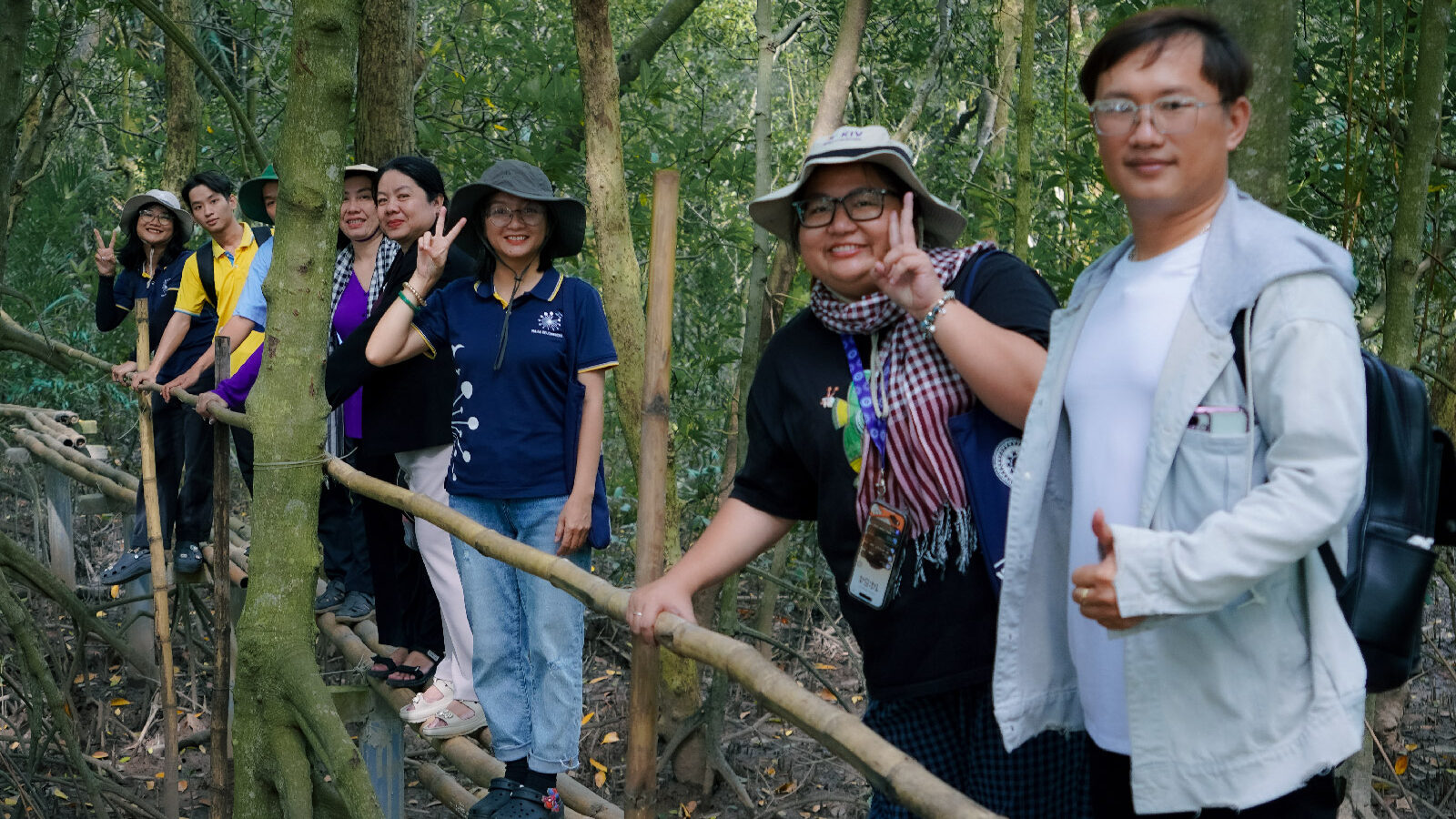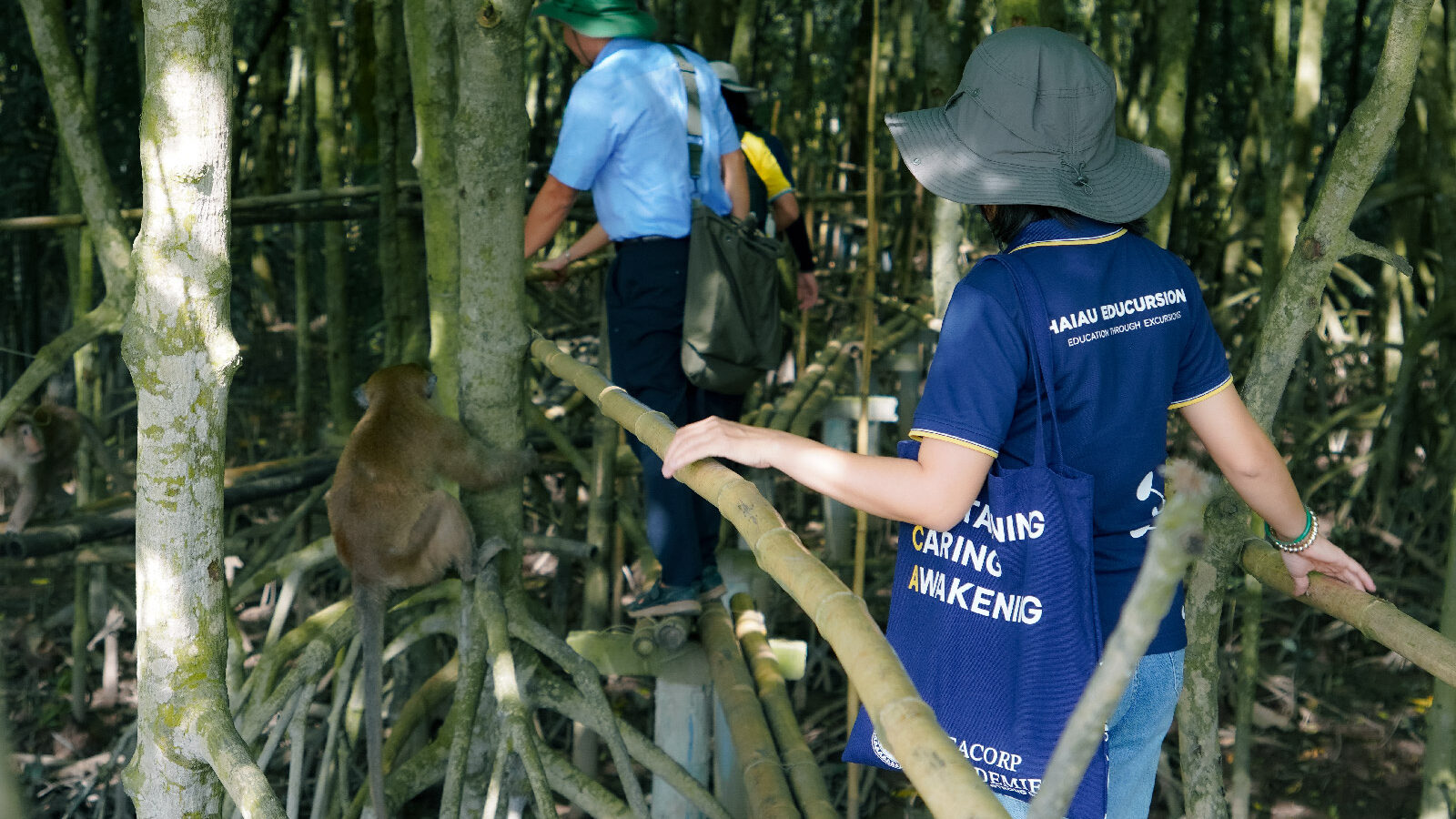
 Restoring the Mangrove Forest of Cu Lao Dung: Women4Mangrove – Sustainable Livelihoods and Women’s Empowerment
Restoring the Mangrove Forest of Cu Lao Dung: Women4Mangrove – Sustainable Livelihoods and Women’s Empowerment
 Cu Lao Dung – A “Green Shield” Facing the Challenges of Climate Change
Cu Lao Dung – A “Green Shield” Facing the Challenges of Climate Change
Cu Lao Dung (Soc Trang), situated between the gentle Hau River and the East Sea, is renowned for its lush green apple mangrove (Sonneratia caseolaris) groves – an icon of the Mekong Delta’s mangrove ecosystem. The mangrove forest is not only a rich habitat for aquatic resources but also a “green shield” protecting the community against natural disasters and coastal erosion.
However, this land is facing serious issues: coastal erosion, biodiversity loss due to uncontrolled shrimp farming, illegal logging, and the increasingly severe impacts of climate change.
In the face of these changes, the Women4Mangrove (W4M) project was established – a proposal submitted to UNEP/GEF within the framework of the “Strategic Action Programme for the South China Sea and Gulf of Thailand” (SAP SCS). W4M is more than just a conservation project; it carries a larger aspiration: to restore the apple mangrove forests while creating new livelihoods for the community, especially by empowering women – the quiet guardians of life at the edge of the waves. On this journey, Hai Au Can Tho, represented by Ms. Nguyen Ngoc Suong (Master of Heritage Studies & Company CEO), is proud to be a key project member.
 Women4Mangrove (W4M): Empowering Women, Revitalizing the Apple Mangrove Forest
Women4Mangrove (W4M): Empowering Women, Revitalizing the Apple Mangrove Forest

Mangrove Regeneration – Challenges and Opportunities
Cu Lao Dung is located in the middle of the Hau River, where two major river mouths converge, bordering the East Sea. This is a land rich in revolutionary history, diverse ecosystems, and abundant fisheries. The sugarcane fields, shrimp ponds, and stretches of mangrove forest demonstrate the endless vitality of this region.
The mangrove forest in Cu Lao Dung was once the “green shield” of the former Soc Trang coastal area (now Can Tho City). However, many previous restoration efforts were not strong enough, due to both objective and subjective factors, and the lack of a sustainable alternative livelihood solution.
Recognizing both the challenges and the opportunities, W4M in general, and the women—especially women entrepreneurs—in particular, when empowered, can transform the mangrove forest into a new source of livelihood. The project began by establishing a nursery managed by the Women’s Union. Every seed of life planted, every sapling nurtured, brought hope not only to the forest but to the people. From this, a conservation model integrated with livelihoods was formed: the forest is revitalized, and people find a new way to live alongside the forest.
 Practical Activities Underway in the Project:
Practical Activities Underway in the Project:
-
Production of non-timber forest products (herbal tea from apple mangrove flowers, a local specialty).
-
Community-based agri-tourism linked to forest planting experiences and ecological tours.
Goals and Orientation – When Women Become the Heart of the Conservation Journey
What makes W4M different is not the sheer numbers of hectares replanted, but who is planting and why they are planting. From the outset, the project placed women at the center. They are no longer “behind the scenes” but become “leaders”: propagators, nursery managers, product processors, and storytellers of the forest for tourists.
The W4M project aims to combine forest regeneration with the development of regenerative livelihoods:
-
A mangrove nursery & training center managed by women.
-
Support for the production of herbal tea from apple mangrove flowers – turning a local flavor into an economic product.
-
Development of community agri-tourism – where visitors can plant trees, learn about the ecosystem, and experience local culture.
The goal of W4M is therefore not just to revitalize the mangrove forest, but to empower women to lead the change. When a woman has a voice, the entire family changes. When the community believes in the hands of women, the sustainability of the conservation model is ensured.
 Project Highlights – When Conservation and Livelihoods Go Hand in Hand
Project Highlights – When Conservation and Livelihoods Go Hand in Hand
A unique feature of W4M is the harmony between conservation and economic development. The forest is no longer a burden but a resource. The project’s solution is to turn nature’s gifts into regenerative livelihoods.
-
Restoration of 5 ha of apple mangrove forest in Cu Lao Dung.
-
Establishment of 01 mangrove nursery, managed by the women’s business association.
-
Training on the production process, including harvesting, processing, and marketing herbal tea from the mangrove.
-
Implementation of courses and ecological tourism experiences linked to the forest, raising community awareness.
-
Policy dialogue, ensuring the integration of gender, youth, Khmer ethnic groups, and disadvantaged households.
A vivid demonstration is the apple mangrove flower tea product. The apple mangrove tree, intrinsically linked to the wetland area, is now transformed by women’s hands into a unique, healthy beverage that encapsulates the story of the forest. Each tea bag is not just a product, but a message: “By drinking this tea, you are contributing to saving the forest.”

Alongside this is community tourism. Visitors to Cu Lao Dung do not just sightsee; they get to experience – planting trees themselves, listening to local stories, and enjoying simple meals sourced from the mangrove’s bounty. Through these experiences, tourism becomes a bridge, spreading the conservation message more widely.
 Hai Au Can Tho Connects Community and Sustainable Development
Hai Au Can Tho Connects Community and Sustainable Development
Hai Au Can Tho believes that Cu Lao Dung will become a new destination for ecotourism and scientific research.
We not only accompany W4M in Cu Lao Dung but also bring this spirit of social responsibility to other projects, such as:
-
The Volunteer Project “On The Map”: Where we contribute to preserving cultural values and traditional livelihoods.
-
Bringing Tư Việt Seasonal Rice heritage into tourism: Aiming to increase income and knowledge of sustainable tourism for local people.
With our local understanding and mission, Hai Au Can Tho wants to prove that Conservation is not a sacrifice, but finding a path to symbiosis, where nature and people revitalize and thrive together.
Women4Mangrove not only restores the forest but also sows hope for a greener future, where local women are pioneers leading change.
 Call to Action
Call to Action
Every package of apple mangrove flower tea you enjoy, every ecological tour you take part in, is a practical contribution to preserving the forest.

Let’s join Hai Au Can Tho and Women4Mangrove in writing a new story for Cu Lao Dung!
Official project website: https://women4mangrove.com/
